
TIMEPAC Project: Adaptive and integrated performance assessment across building lifecycle

TIMEPAC Project: Adaptive and integrated performance assessment across building lifecycle
This article discovers how TIMEPAC’s dynamic, data-driven energy certification equips building professionals with tools, training, and insights to lead Europe’s building stock decarbonisation.
Authors
Leandro Madrazo, ARC Engineering and Architecture, La Salle, Ramon Llull University
Vincenzo Corrado, Poytechnic University of Turin
Silvio De Nigris, Regione Piemonte
Gustavo Jacomelli, European Science Communication Institute
Álvaro Sicilia, ARC Engineering and Architecture La Salle, Ramon Llull University
Boris Sučić, Jožef Stefan Institute
(Note: Opinions in the articles are of the authors only and do not necessarily reflect the opinion of the European Union)
Introduction
The TIMEPAC project set out to modernise building energy certification by moving from static, one-time Energy Performance Certificates (EPCs) to dynamic, data-driven, and lifecycle-oriented assessments. Central to this shift was the development of five Transversal Deployment Scenarios, which explored the integration of innovative elements such as Building Information Modelling (BIM), operational and consumption data, Smart Readiness Indicators (SRI), and sustainability metrics into certification workflows.
These future-oriented scenarios reimagined the role of EPCs, aiming to strengthen their reliability and usability. Key directions included linking EPCs with building Renovation Passports, aligning them with frameworks like Level(s), and leveraging EPC databases to guide renovation strategies. TIMEPAC’s scenario-based approach offers a replicable model to support continuous improvement in energy performance and accelerate the decarbonisation of the EU building stock.
The project tested its methodologies across six European countries —Austria, Croatia, Cyprus, Italy, Slovenia, and Spain —and validated them through cross-country workshops and stakeholder consultations. These participatory processes ensured the relevance and feasibility of the proposed practices in real-world contexts.
To build capacity for implementation, TIMEPAC launched the TIMEPAC Academy, a dedicated training platform that reached over 1,000 professionals. The Academy provided guidance on applying the project’s approaches, fostering broader adoption of advanced certification practices.
The project’s outputs, align with the revised Energy Performance of Buildings Directive (EPBD), supporting its implementation through enhanced data interoperability, stakeholder engagement, and ongoing professional education.
TIMEPAC’s vision
TIMEPAC aimed for a redefined vision of building certification which encompasses (a) data generated throughout the entire certification process—from generation and storage to analysis and exploitation—covering all stages of the building lifecycle (Figure 1); (b) buildings as interconnected elements within the broader built environment, linked to energy distribution and transport networks; and (c) buildings as dynamic entities that evolve over time.
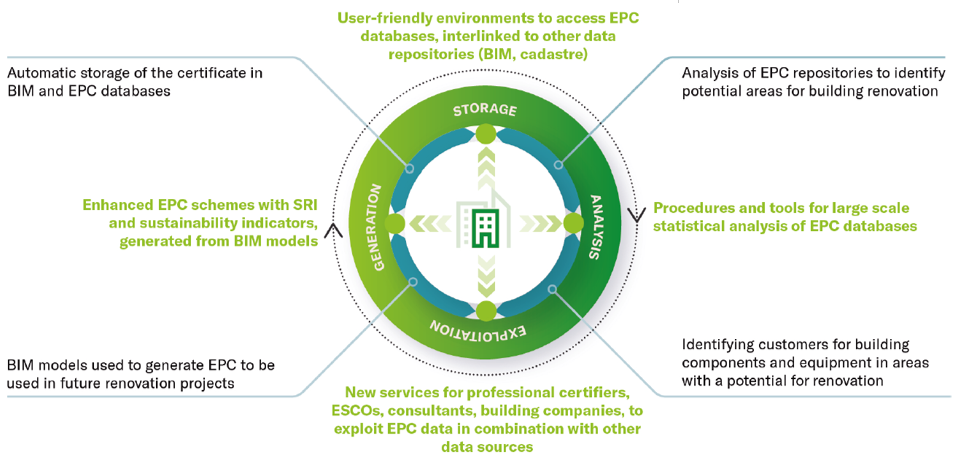
Figure 1. TIMEPAC’s vision of the certification data flow.
Transversal Deployment Scenarios
The purpose of the Transversal Deployment Scenarios (TDS) was to envision future working procedures that overcome the current limitations of EPCs and unlock their potential as effective tools for decarbonising the building sector.
TDS 1 – Generating enhanced EPCs with BIM data
The revised EPBD promotes the use of digital technologies—like Building Information Modelling (BIM)—for better energy performance assessment throughout a building’s lifecycle. Integrating BIM with energy simulation tools can help transform EPCs from static snapshots into dynamic monitoring tools. When updated regularly, BIM models offer detailed, evolving representations of building characteristics and environmental impacts (Figure 2).
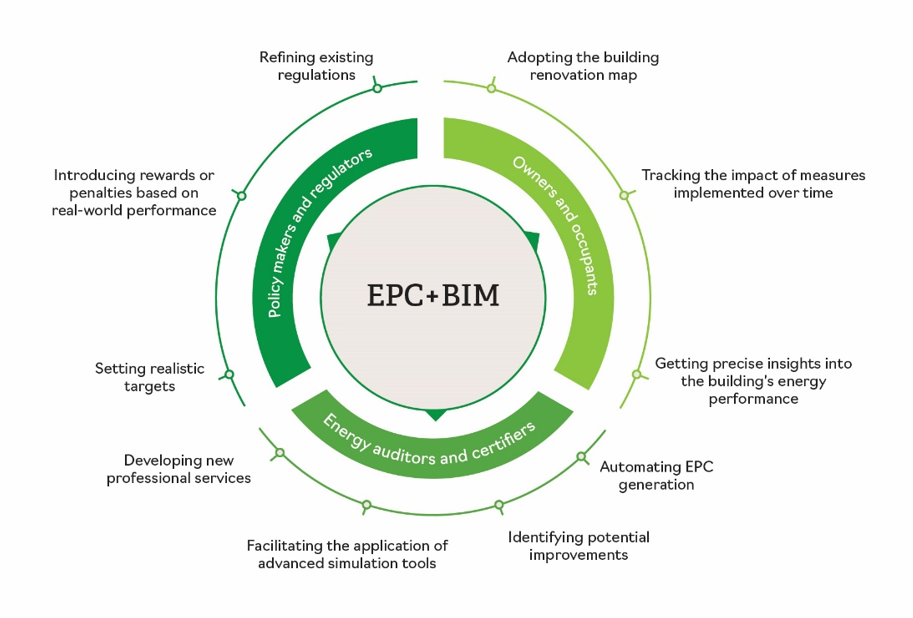
Figure 2. Applications resulting from the integration of EPC and BIM by various stakeholders involved in the certification lifecycle.
However, challenges remain, especially in software compatibility and the exchange of non-geometric data. TIMEPAC addressed these by developing guidelines to extract building data from BIM—geometry, materials, systems, performance—and convert it for certification tools.
The BIM-to-EPC process was tested in six European countries, demonstrating improved EPC quality, greater certification efficiency, and enhanced software interoperability. Yet, some certification tools struggled to fully interpret BIM models, mostly due to software limitations rather than the methodology itself.
To fully realise BIM’s potential in certification, TIMEPAC recommends improving software, refining IFC standards, and boosting stakeholder training and awareness. These steps are essential to embed digital workflows into future EPC systems.
TDS 2 – Enhancing EPC schemas through operational data integration
Traditional EPCs provide a static estimate of energy use, offering little insight into real performance. This scenario aims to transform EPCs into dynamic tools by integrating operational data—such as actual energy consumption and occupancy patterns—and introducing new key performance indicators (KPIs).
Aligned with EPBD Annex V, the enhanced EPC framework (Figure 3) includes layered analyses: standard and tailored performance assessments (SEPA and TEPA), model calibration with real data, cost analysis of energy-saving measures, indoor environmental quality (IEQ) evaluation, and assessment of building automation and control systems (BACS).
TIMEPAC supported this shift by collecting data from buildings in partner countries and developing new guidelines to capture economic and comfort-related factors. These inputs informed the integration of updated KPIs into the EPC framework, either as required or optional elements.
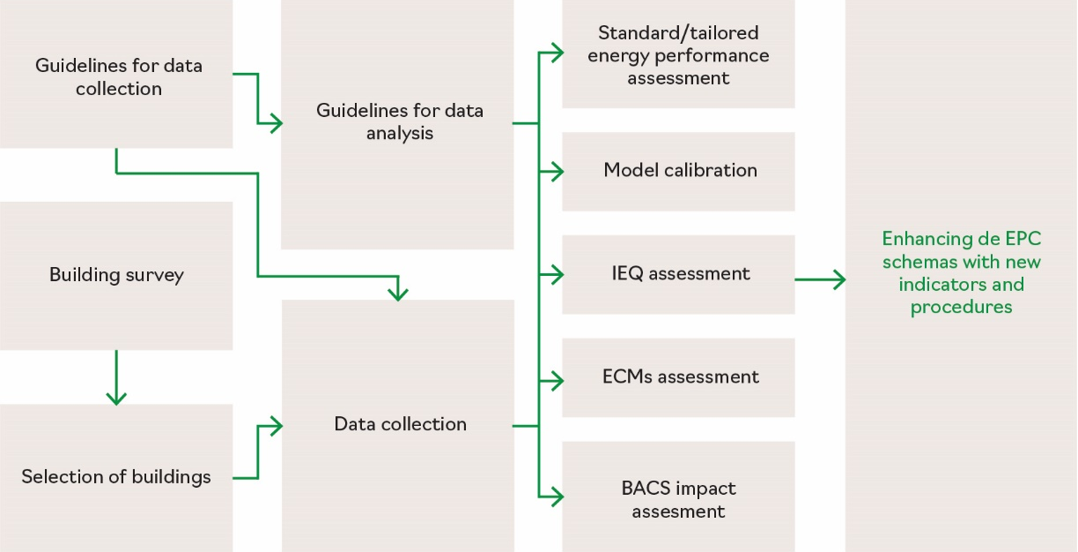
Figure 3. EPC enhancement workflow.
TEPA provided key insights by incorporating real occupancy and user behaviour, though it required detailed, often hard-to-get data. Calibrating models with operational data improved accuracy but increased computational demands. Economic assessments using discounted costs were straightforward and effective, while IEQ evaluations faced challenges due to data resolution and regional differences. BACS analysis revealed a significant gap in current EPCs, highlighting the need for standardised energy-saving indicators.
Overall, the dynamic EPC approach enhanced certification accuracy and relevance, supporting more informed decisions by owners, certifiers, and policymakers.
TTDS 3 – Creating building Renovation Passports from data repositories
The 2024 EPBD recast introduces the building Renovation Passport (RP) to address low renovation rates by promoting staged, long-term upgrades. Recognising that full renovations are rarely done at once, the RP guides step-by-step improvements, tracks progress, and links building performance to real usage data—supporting services like property valuation and on-bill financing.
TIMEPAC developed methods to generate RPs by integrating EPC data with BIM models, audits, and operational data. The aim is a dynamic system where each renovation updates the BIM model and automatically generates a revised EPC, easing concerns about BIM retrofitting for existing buildings.
Renovation roadmaps tailored to available tools, data, and national practices form the core of RPs. Their effectiveness was assessed by evaluating the strengths and limitations of the involved tools, databases, and the ability to monitor renovation progress.
Two strategies emerged for EPC-RP integration: enhancing EPC software to include RP functions or linking EPCs to additional data sources such as real energy use, comfort, health, and lifecycle costs. For data storage, the main references were EPC-based user accounts (as in Salzburg, Austria) and Level 3 BIM platforms enabling centralised updates.
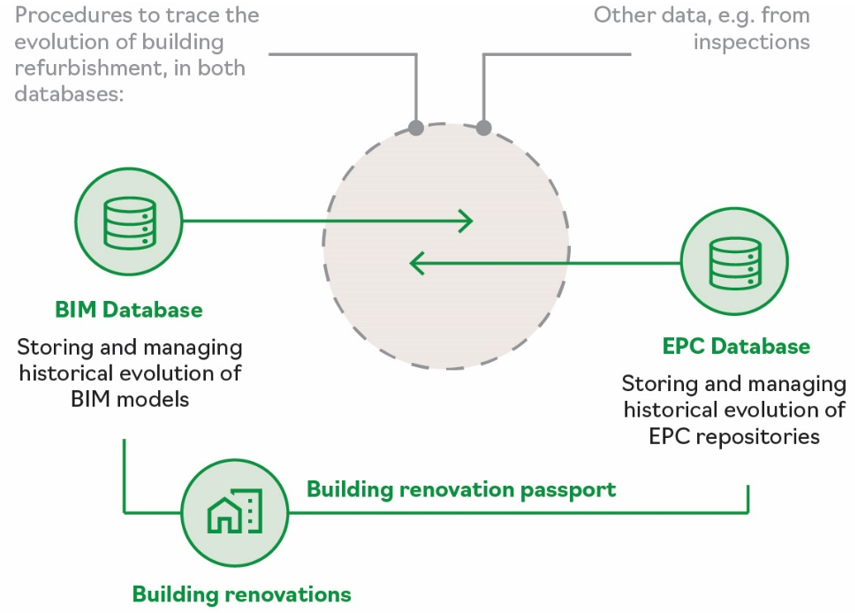
Figure 4. Overview of the development of a Renovation Passport.
Tracking renovation implementation can be achieved through version-controlled EPC databases, BIM-based workflows logging physical and functional changes, or energy audit reports—especially when supported by active energy management systems (Figure 4).
In conclusion, when embedded in the building certification information flow, the RP offers a practical, data-driven pathway for staged upgrades, supporting the EU’s 2050 zero-emission goals through improved planning, monitoring, and certification.
TDS 4 – Procedures and services for integrating the Smart Readiness Indicator (SRI) and environmental sustainability into EPC tools
The shift toward renewable energy and building efficiency demands smarter assessment tools. Included in the EPBD, the Smart Readiness Indicator (SRI) gauges a building’s capacity to use smart technologies that improve energy efficiency and grid flexibility. Alongside the EU’s Level(s) framework, it offers a common language for comparing smart readiness and supports stakeholders in achieving net-zero goals.
TIMEPAC explored integrating SRI and sustainability indicators into EPCs through case studies in six countries, covering diverse buildings and climates. These studies showed that combining real consumption data with smart metrics leads to more accurate assessments and tailored renovation scenarios. However, integration challenges remain—especially achieving interoperability between data sources like BIM models, energy audits, and EPCs (Figure 5).
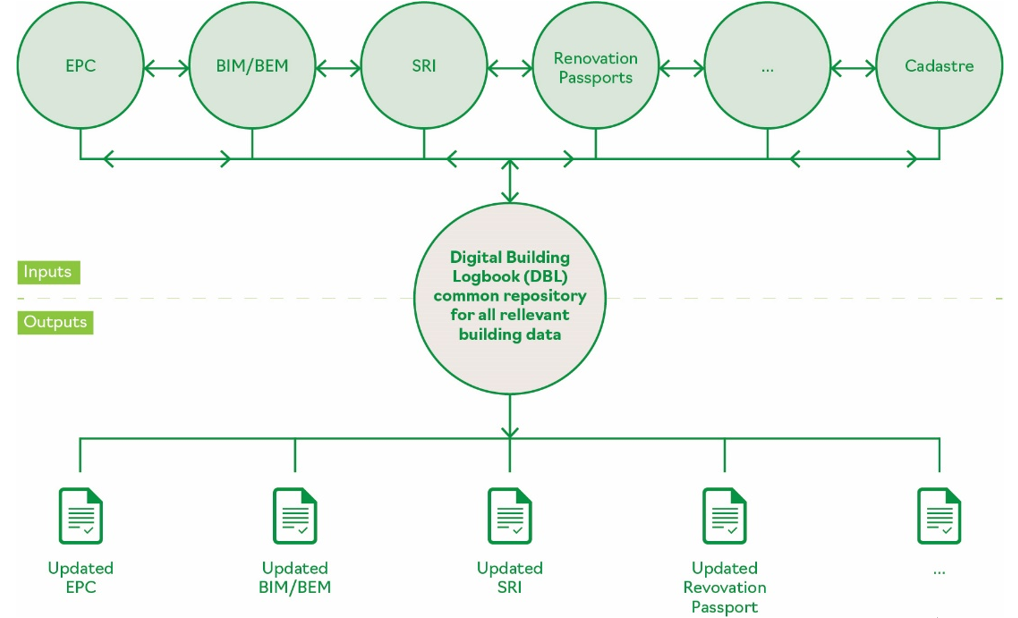
Figure 5. Digital Building Logbook as a central element of the future interoperability between different databases and envisaged dataflow.
To enhance the SRI’s usefulness, it must be paired with clear recommendations, robust audits, and effective communication. TIMEPAC proposed the smart performance coefficient (SPC) to contextualise SRI scores against benchmarks, improving interpretability for building owners. A TIMEPAC Code of Conduct was also introduced to ensure transparent and professional use of the SRI and sustainability indicators.
In conclusion, while still evolving, the SRI has strong potential to shape smarter, more sustainable buildings. Real impact will depend on refining methods, updating benchmarks, and actively engaging users with clear, actionable guidance. Tools like the SPC and the Code of Conduct can help turn complex metrics into practical outcomes.
TDS 5 – Procedures and services for large-scale statistical analysis of EPC databases
The revised EPBD requires Member States to develop national renovation plans to achieve a zero-emission building stock by 2050. These plans depend on interoperable building stock databases, including EPCs and land registries.
TIMEPAC focused on three main tasks: improving EPC data quality for archetype development, using EPCs for energy balance assessments, and generating confidence intervals for key parameters (Figure 6).
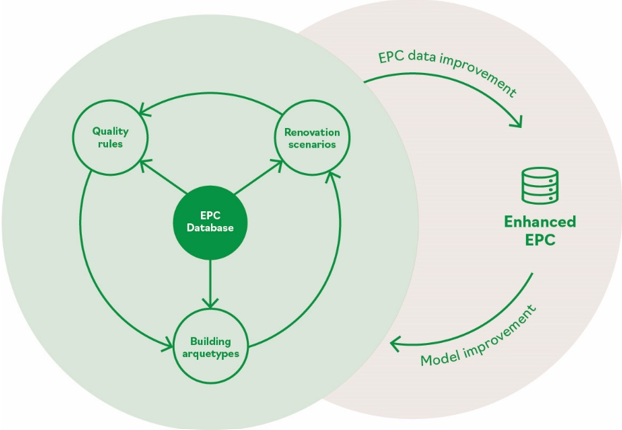
Figure 6. Quality process components and envisioned improvements.
A core step is creating building archetypes—groups of buildings with similar traits (e.g., climate, use, age, size)—to support urban energy modelling and renovation planning. Since archetype accuracy depends on EPC data quality, TIMEPAC developed control rules and quality-check procedures to identify inconsistencies and score data reliability. Confidence intervals were used to express uncertainty and improve trust in results.
Despite current EPC limitations (static data, incomplete entries, quality variance), the proposed methodology offers a flexible, iterative framework. It supports more accurate national building stock models and renovation scenarios, helping policymakers design better energy strategies.
Ultimately, an enhanced EPC database will form the backbone of future EU systems, enabling continuous updates to archetypes and renovation models aligned with evolving data.
Verification Scenarios
To verify the feasibility of the processes and methods developed in the TDSs, from July 2023 to January 2024, four Verification Scenarios (VS) were conducted across the six partner countries, engaging 419 stakeholders involved in building certification. Each VS incorporated findings from various TDS and was adapted to local contexts.
The workshops aimed to present and discuss enhanced building performance scenarios, gather participant feedback, and identify skill development needs to be addressed through the TIMEPAC Academy. All four VS followed a similar structure regarding concept, methodology, and result reporting.
VS 1: Improving certification with enhanced EPCs
In the sessions organised in the participating countries, 98 participants—including energy certifiers, public authorities, energy agencies, and consultants—convened to explore ways to enhance EPCs by integrating SRIs and additional sustainability metrics, alongside BIM technologies.
The sessions focused on recent updates to the EPBD and emphasised the importance of interoperability between BIM platforms and certification tools. Key challenges identified included data loss during model transfers, the need to balance affordability with certification accuracy, and varying levels of BIM adoption caused by differences in technical capacity and regulatory contexts.
The discussions fostered cross-sector collaboration and underscored the need for strong national commitments, advanced training programmes, and robust data infrastructure to support the evolution of EPC processes.
VS 2: EPC exploitation through advanced analysis
In the various workshops held,136 stakeholders examined how to combine EPC data with BIM and other sources to support the development of building Renovation Passports. Discussions focused on integrating operational data, sustainability indicators, the SRI into EPCs to enable more comprehensive and dynamic certification across the building lifecycle.
A key takeaway was the need for centralised data repositories to enhance data accessibility and quality across platforms and regions. While stakeholders acknowledged the value of incorporating sustainability indicators, many highlighted current tool limitations and stressed the need for further training on data management within EPC frameworks.
VS 3: Building Renovation Passports from enhanced EPC data
The discussions during the sessions focused on the feasibility of leveraging EPC data and statistical analyses to develop renovation roadmaps that support long-term objectives, such as achieving nZEB and ZEB and ZEB levels, in line with the latest EPBD standards.
Workshops held in the six countries engaged 105 participants and introduced a modelling tool designed to help energy agencies perform energy balances and assess the regional impact of renovations. This tool integrates data from EPCs, energy audits, and monitoring systems.
Key challenges identified included data standardisation, accuracy, and the lack of centralised data management. Municipalities showed strong interest in RPs as practical tools for guiding local renovation strategies, emphasising the need for clear renovation steps, cost estimates, and energy savings targets to meet sustainability goals.
VS 4: Improving building operation with enhanced EPC
In eight workshops across five countries, 80 stakeholders—ranging from public authorities to end users—discussed integrating operational data, the SRI, and sustainability metrics into EPCs. Operational data was seen as adding value, making EPCs more useful for investment and renovation decisions. Participants emphasised the importance of digitalisation, data interoperability, and continuous training. The SRI was recognised as key for energy efficiency, with suggestions to include indoor comfort data. Challenges included ensuring data accuracy, user behaviour, and securing funding.
Overall, the workshops organised within the four verification scenarios highlighted the need for multidisciplinary training and collaboration. These insights informed the TIMEPAC Academy’s training programme and support ongoing improvements to EPC methodologies for better renovation planning and building performance.
TIMEPAC Academy
The procedures developed within the TDSs to enhance building energy certification and subsequently verified through the workshops with representative stakeholders across the partner countries, were transformed into a structured training programme for a broad, multidisciplinary audience.
The curriculum shared TIMEPAC’s latest methodologies and tools, covering advanced topics like integrating the SRI, sustainability metrics, and BIM into certification processes. It emphasised practical use, data interoperability, and continuous performance monitoring to support sustainable renovation and building operations.
Conclusion
TIMEPAC’s forward-looking strategy, combining future scenarios and targeted training, offers a strong model to unlock EPCs’ potential in advancing building performance and decarbonisation goals. The project produced accessible factsheets and detailed reports to widely share its findings. Over three years, TIMEPAC collaborated with sister projects in the Next Generation EPC cluster, contributing evidence-based insights to the EPBD revision process. While aligned with TIMEPAC’s objectives, the approved Directive requires major changes in certification processes, tools, and policies. The TIMEPAC Academy ensures ongoing professional training and knowledge exchange, essential for adopting innovative certification practices across the building sector.

